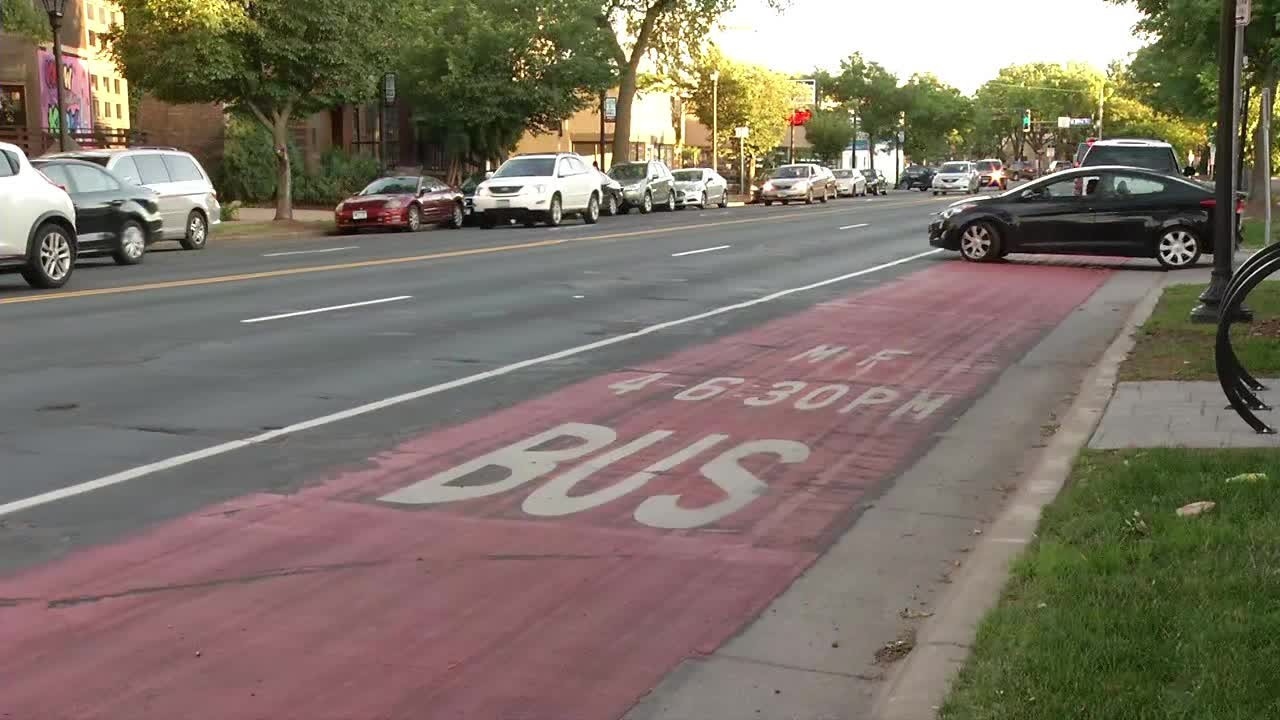Minneapolis City Council approves new layout, 24/7 bus lanes for Hennepin Avenue

A bus lane is shown on Thursday, June 16, 2022, on Hennepin Avenue South in Minneapolis. (KSTP)
A proposal for a reimagined Hennepin Avenue is one step closer to becoming reality after the Minneapolis City Council voted Thursday to approve a new layout with permanent bus lanes.
The council voted 8-5 to approve the new layout and a resolution to work with the city engineer to establish parking restrictions — thereby creating 24/7 transit lanes.
RELATED: Hennepin Avenue redesign proposal reaches final stages, community reacts
Currently, Hennepin Avenue South has two lanes for automobiles in either direction for the entirety of the stretch from Douglas Avenue to Lake Street, along with outer lanes for street parking that are converted to bus lanes during rush hour.
The new layout, if it gains Mayor Jacob Frey’s signature, will provide for one lane each for automobiles and buses in either direction, along with a raised bikeway on the east side of the street — eliminating almost all curbside parking along the reconstructed route.
The plan includes exceptions for 8-foot-wide loading zones cut into the green space separating the bus lane from the bikeway and sidewalk.
Proponents for the redesign say the changes will improve equity of access to Hennepin Avenue for households that do not own cars by promoting mass transit, cycling and walking as the main modes of getting around Uptown’s main street.
“The original recommended layout and timeline, with full-time bus lanes, a bikeway and improved crosswalks, would dramatically improve transportation options and is a long-overdue investment in equity and mobility justice,” a letter submitted dozens of times to City Council members states. “It will make it easier for working class members of our community to get to work, shop, access medical appointments and eat along the corridor.”
Opponents have worried that getting rid of street parking will be bad for shops along Hennepin by pushing visitors onto residential streets and that removing a lane of car traffic will make traffic worse.
However, supporters believe the plan will actually alleviate congestion by eliminating the need for buses to weave in and out of car traffic — all while reducing emissions and allowing for more efficient transit routes.
Construction on the route will commence in 2024 and is scheduled to wrap up in 2026.